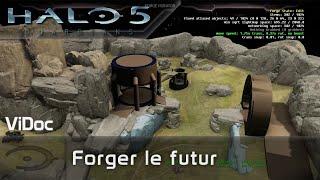
Gain, Offset, Read Noise, Exposure time?! Let's clarify
Комментарии:

fantastic video. Very informative. Thank you :-)
Ответить
Amazing explanation, very clear. good job!
Ответить
Thank you for the explanation, best I have seen so far!
Ответить
Thank you! This was very helpful.
Ответить
Great explanation Cuiv. Thanks.
Ответить
Thanks for the education!!! 😜
Ответить
this video answered sooo many of my questions, thanks so much !
Ответить
Cuiv hate to bother you but cant figure this out..You know NINA good this is my problem. I have not been able to use my PCC it never plate solves. So today I had a thought , I looked at the metadata in the fits header . So I have an image of The Blinking Planetary Nebula and it is centered in my image . Now on my image the RA and Dec are 19-31-00 and the dec is 52-24-48 but when you plug that into NINA it is not what I have on my image just stars and the coordinates should be 19-44-48 and 50-31-30 and I dont know why this is happening driving me nuts... Any Ideas ....???
Ответить
Thanks. This helps make sense of those graphs for my new ASI294MC Pro.
Ответить
My DSLR was easy. Lower ISO for warmer nights. Three minute subs without guiding; five minute with guiding (no star trails). Now, the ASI294MC Pro, I use gain of 120, but are shorter subs good for some targets? Like M31 or M42?
Ответить
Very nice presentation and very informative! Subscribed!
Ответить
Too bad you can’t even buy a telescope anymore !
Ответить
You’re a fantastic teacher. Thank you (from a noob).
Ответить
Wow! So well explained! Thanks so much for this master class!
Ответить
I still didn’t get how you estimate exposure time. Try and error?
Ответить
Great video, btw you could also get the 2600mc pro aps c but its 16bit
Ответить
I do miss your videos since you took your break. Hope you come back soon . You're quite the character. 👍
Ответить
Thanks Cuiv, I just bought a 294MM Pro and couldn't get my head around all these values by looking at forum posts. You explained everything perfectly!
Ответить
Cuiv…wow!! I will need to watch this episode at least ten more times to fully understand most of what you are teaching us!!
My question is…as you increase gain (thereby shortening exposure time), aren’t you increasing RN?

My head hurts….
Ответить
thanks for this video. I will try to adjust my next shots paying attention to this explanation. I see i can improve something in my image paying attention to this details. Thanks
Ответить
Aaaaawsome!!
And 101, 4 suuure, kkkk
Edit: Thank you very much!!!

This is probably the best video explaining this I’ve ever seen.
👏🏻👏🏻👏🏻👏🏻👏🏻👏🏻👏🏻👏🏻👏🏻
I proudly wear your T-shirt

TY for this complete, simplified and clear video explanation regarding relationships of component variables to exposure choices for image planning. Really helpful!
Ответить
"...all about swamping the read noise...". Too funny. Thanks for the informative and fun videos
Ответить
Thanks for going through all this. To clarify, the Dynamic Range plot is the DR of the sensor, not your image. They are not the same. For example, in my typical dual band images of nebulae, 5 min exposures might give histograms with a main peak from say 250 to 1000 roughly. Now if I quadruple the gain, it’ll be 1000-4000. Note that the DR of my IMAGE hasn’t changed at all, it’s the same. The DR plot you show assumes that your histogram covers the full range of 1-65536, which absolutely never happens in reality. So as long as you don’t saturate pixels, you can crank up the gain and the DR of your image will not change.
Ответить
I am starting to wonder if it is looking up at sky objects or all the cool gadgets and telescope equipment that is the fun stuff to do astronomy? 😎 Thank you.
Ответить
Hello, tell me how quickly the camera should be defrosted after cooling to minus 10 degrees? After all, with a sharp change in temperature, it can leak? What will lead to its breakdown. Maybe 2-3 degrees per minute or 5 degrees per minute? How right?
Ответить
Two years later, and this content is still golden! Thanks for teaching me these concepts - super useful for a new astrophotographer.
Ответить
Great explanation! Thank you!!!
Ответить
Merde! Cuiv avec un barbe??? Truly early videos lol
Ответить
On a more serious note, your videos are masterful. I've worked professionally in photography and videography for many years, and every time I watch your videos I learn something. Lots of things. Very good info and very well presented.
Ответить
Thanks for explaining it so well and the "don´t worry too much about it" attitude! That´s very much apprechiated by a beginner, worrying too much about basically everything <3 :D
Ответить
Jeeez Cuiv, heavy night lol
Ответить
I think it needs to be renamed from Optimal exposure time to minimum exposure time because it doesn't take into account target brightness
Ответить
Just enough explanation to really help me along! Thanks, Cuiv! 👍
Ответить
Perfect explanation thank you
Ответить
incredible content! you're wicked smart
Ответить
Got a second hand 294MC Pro which I can't wait for the life of me to try. Thanks for the video, it really helps understanding all the settings!!
Ответить
Thank you, that was instructive. 👍🏻
Ответить
If read noise is swamped by light pollution so easily, why use any gain or offset?
Ответить
Cuiv, love you videos. I have question for you. At what point do we say we have enough data and continuing to image won't provide anymore Signal?
Ответить
Interestingly you can only expose up to 33 minutes with the 2600MC Pro OSC CMOS camera (they must have software limited the exposure time?) whereas for my Trius M26C OSC CCD cameras I have taken exposures up to 1-hour - no problem.
Ответить
Muy buena y clara explicación, un capo total.
Ответить
old vid but still nice to see.
since you said it your self, I never do the optimal exposure only use that as a minimum value have you ever tried to doing a video and making your self use that number the calculator gives you just to be sure the advantages of optimal is not worth the time it take to stack?

Thank you
Ответить
After searching and searching I stumbled on this 4 year old video from you and its the best explanation out there! I really appreciate your videos and want you to know your older content is still very helpful!
Ответить
Thanks for this excellent video. My setup is 62ed evolux + goto mount + bresser full hd camera without reducer but with the contrast baader filter.
I'm shooting with sharpcap. I'm familiar with the lucky imaging technique generally between 4 and 8 s exposure with the maximum gain (5000). I'm trying 16s on M51up to 6 hours in total.(2 nights ). Unfortunately i got the colours but not the arms details. I made 32s but the screen becomes close to white !!
should I reduce the gain to around 101 as you explained and increase the time exposure till 2-3 min ?? (Long shots). Probably In this case there is risk that the stars becomes dashs...
Please advice how to proceed.



![Fix YouTube An error occurredThere was a problem with the server [400] (Playback ID: yKJyKwk2Lyn-C.. Fix YouTube An error occurredThere was a problem with the server [400] (Playback ID: yKJyKwk2Lyn-C..](https://ruvideo.cc/img/upload/c1hLcTlfZW9jamw.jpg)























